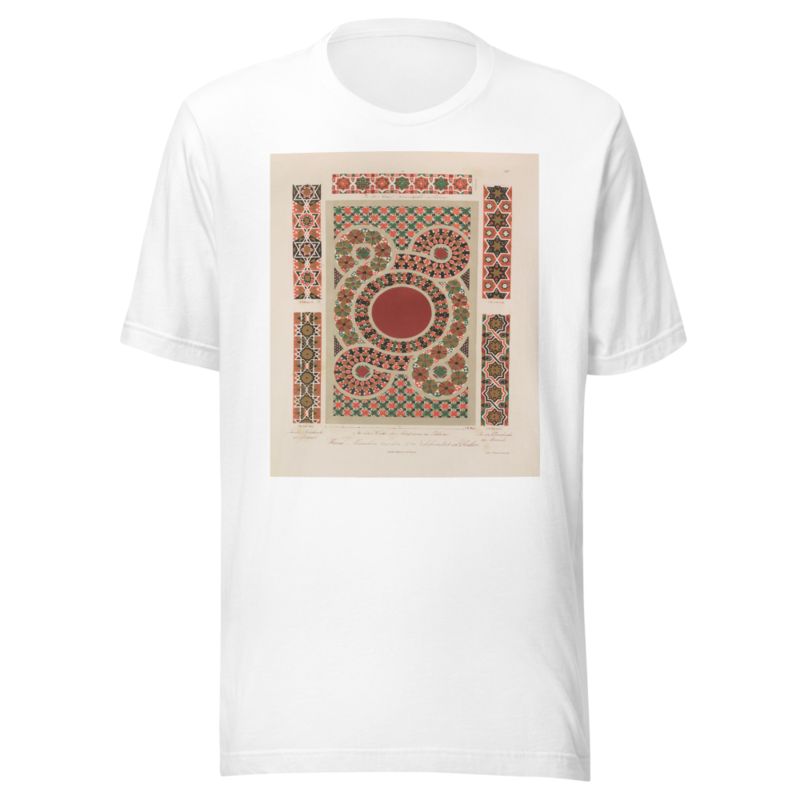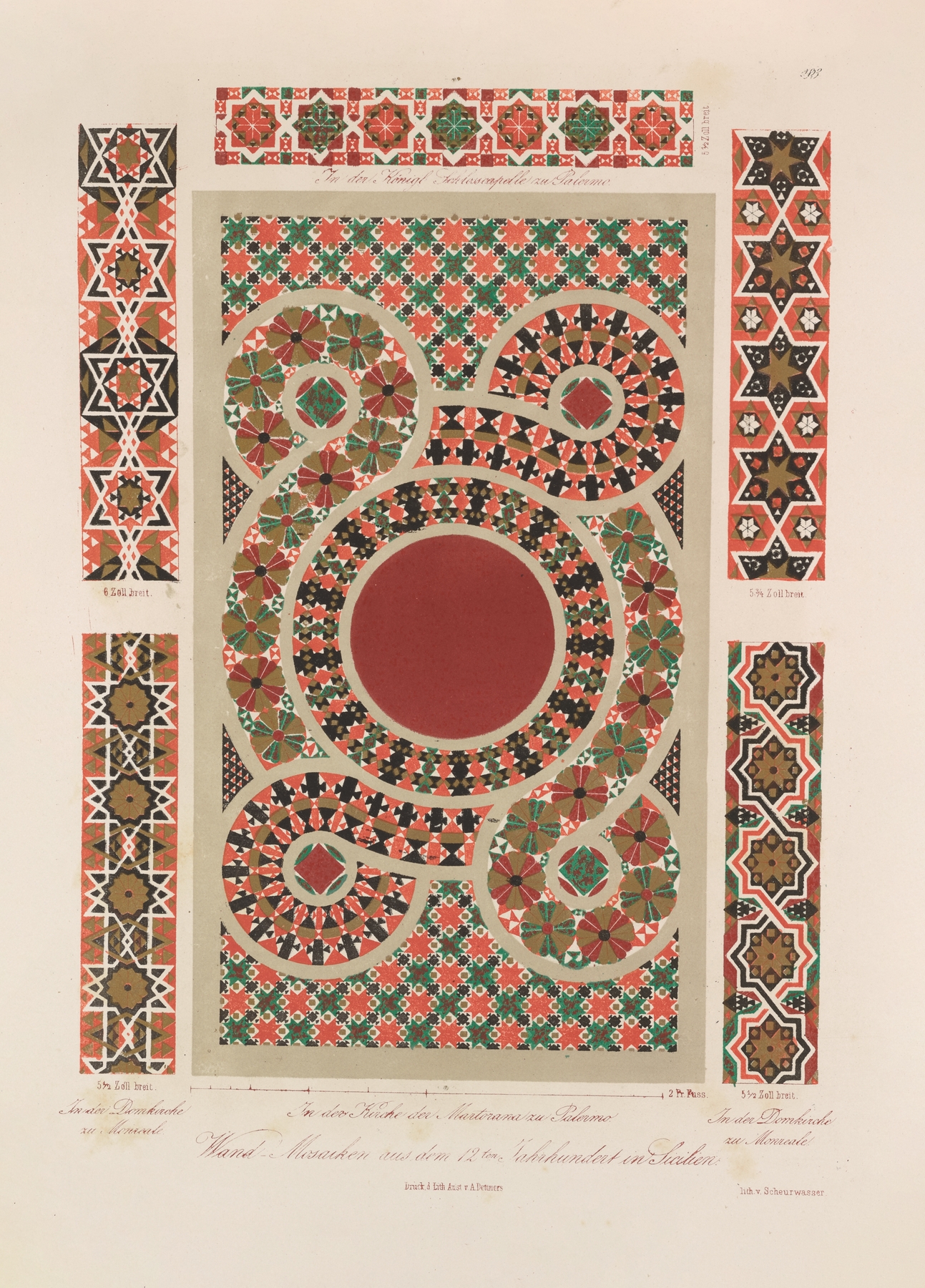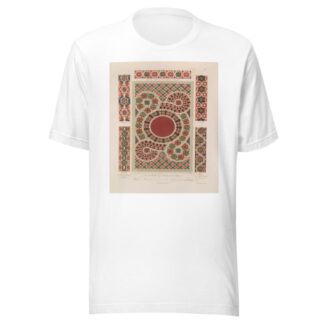Description
Ornamente aller klassischen Kunst-Epochen nach den Originalien in ihren eigenthümlichen Farben Pl.083 by Wilhelm Zahn printed on a T-Shirt
About the T-Shirt
Regular fit
Standard length, the fabric easily gives into movement
Casual wear
A classic, everyday option loved by our customers
Side-seamed
Constructed by sewing two parts together, creating a fitted look
The Unisex Staple T-Shirt feels soft and light with just the right amount of stretch. It’s comfortable and flattering for all. We can’t compliment this shirt enough–it’s one of our crowd favorites, and it’s sure to be your next favorite too!
- Solid colors are 100% Airlume combed and ring-spun cotton
- Ash color is 99% combed and ring-spun cotton, 1% polyester
- Heather colors are 52% combed and ring-spun cotton, 48% polyester
- Athletic and Black Heather are 90% combed and ring-spun cotton, 10% polyester
- Heather Prism colors are 99% combed and ring-spun cotton, 1% polyester
- Fabric weight: 4.2 oz./yd.² (142 g/m²)
- Pre-shrunk fabric
- 30 singles
- Side-seamed construction
- Tear-away label
- Shoulder-to-shoulder taping
- Blank product sourced from Nicaragua, Mexico, Honduras, or the US
Wilhelm Zahn (1800-1871)
Wilhelm Johann Karl Zahn was a German architect, painter, art critic and design researcher particularly of Roman interior designs found in the ruins of Pompeii. Wilhelm was born as the fourth of five children of painter Bernhard Zahn, and his wife, Christiane, née Weis according to church records. He attended high schools in Bückeburg and Rinteln where he received a universal education. It was in Rinteln where Zahn studied the classics under a Professor Stein who Zahn remembered with particular affection.
Zahn received lessons in architecture and painting from Andreas Range and Sebastian Weygandt, a portrait painter, in Kassel, Germany. He also studied under German neoclassical architect and garden designer, Heinrich Christoph Jussow. Around 1823/24, while he was in Paris with his brother Georg and Johann Wilhelm Nahl, he attended the studios of Jean-Victor Bertin, a French landscape painter, and Antoine-Jean Gros, a French neoclassical artist known for his historical paintings completed under the patronage of Napoleon Bonaparte.
Following Zahn’s stay in Paris, beginning in 1824, he spent three years in Italy, particularly in Pompeii, where he made numerous tracings of wall frescoes in the ruins and in the Museo Borbonico (now the National Archaeological Museum, Naples). He superintended excavations at Herculaneum and Pompeii; cast the finest bronzes and silver vases for the Museum Borbonico; After Zahn’s return from Italy in 1827, he met celebrated poet and naturalist Johann Wolfgang von Goethe. Together with the Grand Duke of Weimar, Goethe introduced Zahn to then Crown Prince, later King Friedrich Wilhelm IV, the Humboldt brothers, Prince Wittgenstein, Schinkel and the sculptor Rauch, as well as other art lovers who promoted the publication of Zahn’s drawings from Pompeii. In 1829, Zahn became professor in the Prussian Academy of Arts in Berlin. As an architect and interior designer, he decorated many fine houses and villas in the Pompeiian style in England and the United States.




Reviews
There are no reviews yet.